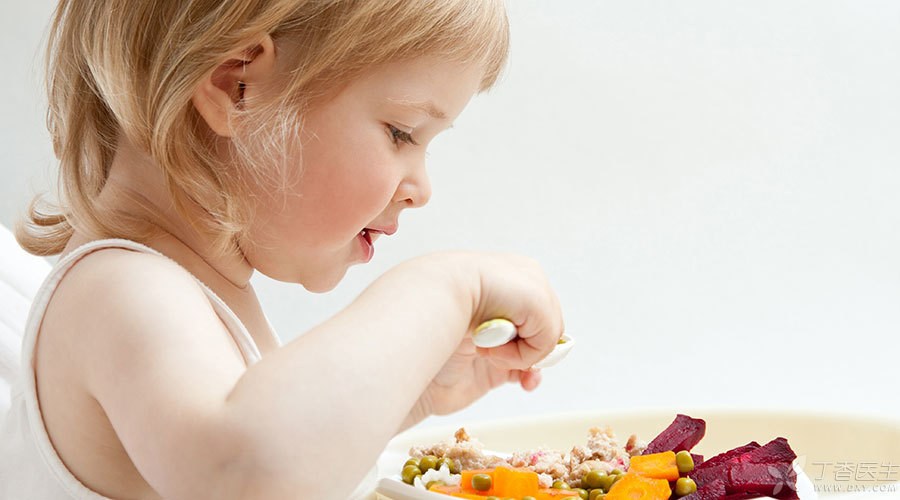
Children’s milk, children’s fine dried noodles, children’s soy sauce, children’s meat floss… Supermarket shelves are full of various foods under the name of “children’s only”. Are these children’s foods really [specially designed for children]? Is it really [beneficial to children’s growth and health]?
In fact, all kinds of prepackaged foods sold on the market have [nutrition labels], and [children’s food] is no exception. As long as you can understand [nutrition labels], you can naturally understand whether the so-called [special for children] is really beneficial to children or just a gimmick for merchants.
What do you think of [nutrition label]?
Step 1 Look at the nutritional composition table
According to national regulations, prepackaged foods should be forced to mark the energy content and the content of protein, fat, carbohydrate and sodium on the label. Enterprises can also choose whether to mark some other nutrients, such as calcium, iron, vitamin C, folic acid, etc. In addition, the reference value percentage (NRV%) of each nutrient should also be marked.
Nutrient Reference Value Percentage (NRV%) refers to the percentage of energy or nutrients in nutrient reference intake, which can be understood as the percentage of an individual’s reasonable daily energy and nutrient intake.
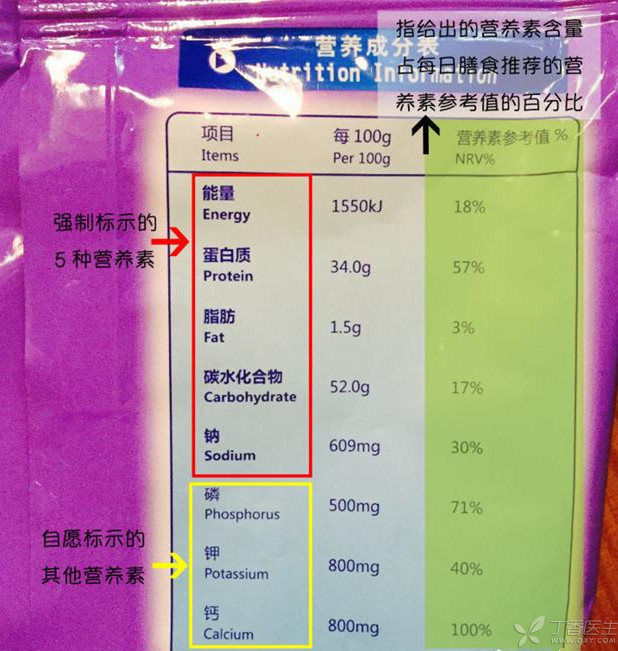
Step 2 Look at the ingredient list
According to the requirements of the state, all kinds of raw materials listed in the ingredient list should be listed in order from more to less. Usually, the raw materials with the highest content should be listed first, and all food additives must be listed.
Parents can find out the content of various additives according to the order of ingredients in the ingredient list. Choose the food with natural raw materials in front (such as milk, eggs, fruits, water, etc.), and the condiment order will be better (such as white granulated sugar, salt, etc.).
When buying food for your baby, there is a very simple principle, that is, don’t buy too long an ingredient list.
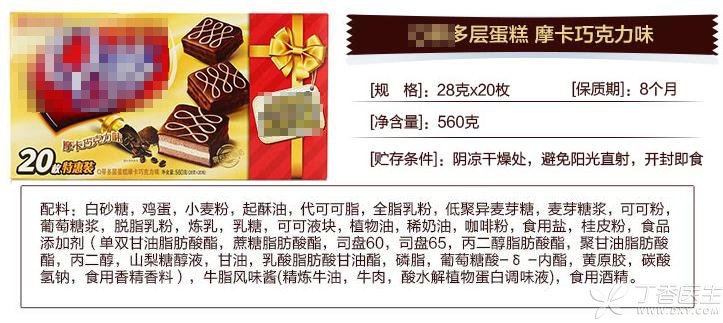
There is no standard [children’s food]
At present, children’s foods on the market mainly include children’s milk, baby soy sauce, children’s noodles, children’s cheese, children’s biscuits, etc., which are mainly aimed at children over 3 years old.
However, in fact, there is no special food safety standard for this group of children in our country, and there is no clear definition of [children’s food]. [children’s food] is only a concept created by merchants for marketing.
In terms of nutritional requirements, The food children eat after the age of 3 is not significantly different from that of ordinary adults. Therefore, These foods have the same requirements and regulations on the use of food additives as adult foods. Most children’s foods are not much different from adult foods in composition, usually only replacing large packages with exquisite small packages, but the price is a lot higher than that of similar adult foods, even several times higher.
In those years, I wanted to buy [children’s food]
1. Children’s Noodles
The main ingredient of children’s noodles is that the sodium content is different from that of ordinary adult noodles. Compared with 430 mg/100 g sodium content in ordinary noodles, the sodium content of children’s noodles is obviously lower than 30 mg/100 g. However, if you like to add a lot of seasoning sauces such as [natural seaweed sauce] below, then this advantage can be ignored.
Instead of buying this kind of children’s noodles, which do not have the advantages of what, parents may as well buy some wheat flour (commonly known as flour) with better quality, make noodles and noodles for the baby to eat, and add various vegetables and colorful noodles according to the baby’s preferences to enrich the baby’s diet. Importantly, homemade noodles can be made without salt and are more suitable for the baby to eat.
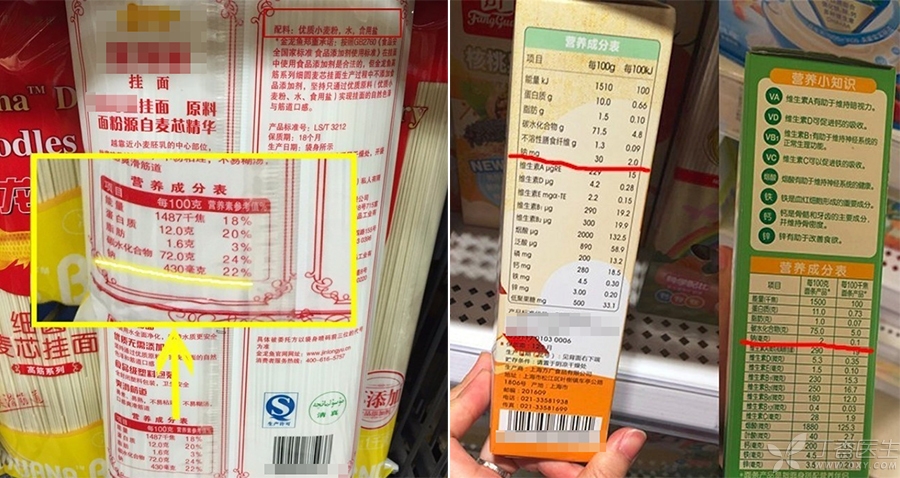
2. Children’s milk
One of the characteristics of children’s milk is [sweet]. In order to cater to children’s taste, Businessmen usually add more sweeteners such as sugar or honey, which will correspondingly be at the top of the ingredient list. In addition to sugar, some products will be seasoned with various flavors to make children like them better, but these are not good for children’s health.
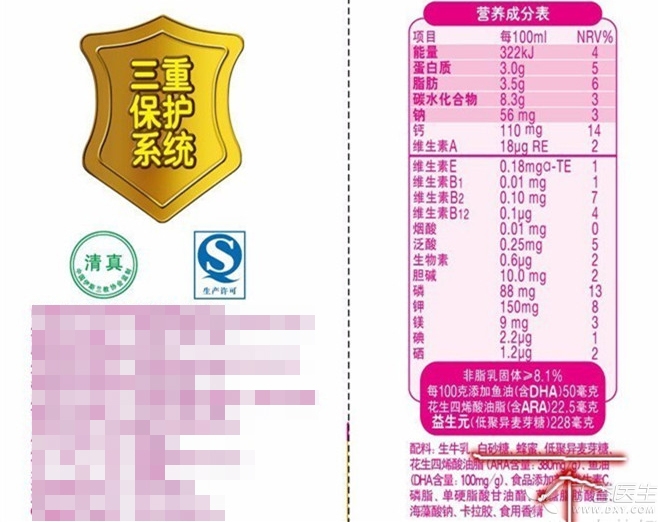
Children’s milk usually adds some additional nutrients, but the added nutrients are not necessarily suitable for children’s growth needs, and excessive nutrition will impose a burden on children’s digestion and absorption.
In fact, judging from the classification of dairy products, there is no real [children’s milk], it is essentially mixed milk.
The national definition of prepared milk is: the protein content of liquid products made from not less than 80% raw cow (sheep) milk or reconstituted milk as the main raw material, other raw materials or food additives or nutrition enhancers, and appropriate sterilization or sterilization processes shall not be less than 2.3 g/100 g.
Parents don’t really need to buy [children’s milk] to suit their children’s tastes. Although the protein content of the prepared milk is not low, there are too many additives in it. Relatively speaking, children after the age of 1 are healthier to choose fresh and healthy pasteurized milk or sterilized milk without seasoning.
In addition, special attention should be paid to the distinction between [real milk] and [milk-containing beverages]. The protein content of real dairy products (including prepared milk) should be at least 2.3 g/100 g, while milk-containing beverages such as AD calcium milk and nutrition express are essentially beverages.
3. Children’s Soy Sauce
Many hot-selling imported soy sauce for children are under the banner of [low salt] [low sodium]. For example, the two kinds of imported soy sauce for children, which are currently selling well, both claim to reduce salt. However, looking at the sodium content on the nutritional composition table, such a high sodium content is not bashful under the banner of [low salt] [low sodium].
China’s standards stipulate as follows
No or no sodium (salt): ≤ 5 mg/100 g or 100 mL;
Very low sodium (salt): ≤ 40 mg/100 g or 100 mL;
Low sodium (salt): ≤ 120 mg/100 g or 100 mL.
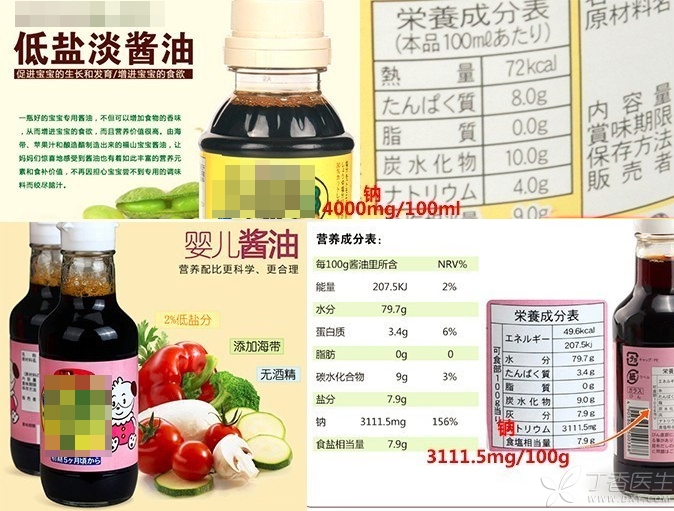
In addition, there is nothing special about all kinds of children’s soy sauce ingredients that can be seen in supermarkets. They are basically water, soybean, wheat, edible salt, white granulated sugar, food additives, etc. Even if they claim to have added all kinds of what apple juice, sour ingredients, etc., they are just for seasoning.
Babies under 1 year old do not need salt or soy sauce! Infant diet does not need to add extra salt or soy sauce for seasoning at all. Normal diet already contains enough sodium to meet physiological needs. Adding salty flavor too early will increase the risk of hypertension in adults.
Children’s soy sauce is a marketing gimmick that is completely hyped and fooled. It is harmful to children’s health. The price is more than a little higher than that of ordinary soy sauce. The price of imported children’s soy sauce is even more expensive. Even if the child has really grown up to the time when soy sauce is needed for seasoning, ordinary soy sauce can be used as well. Why spend this money in vain?
4. Children’s Cheese
Except for a few fresh cheeses with low salt content, most other cheeses need to add a large amount of salt in the fermentation process. Even if the advertisement advertises that the salt content is very low and the taste is very light, the salt content will not be too low.
Therefore, when choosing cheese for your baby, you can refer to the following principles:
-
Although fresh cheese with low salt content is relatively suitable for babies to eat, the content of protein and minerals in cheese is much higher than that of breast milk, which may increase the burden on babies’ kidneys. It is recommended to try it in a small amount. However, most cheese has high salt content, so it is better to wait until the age of 1 before giving it to the baby.
-
Cheese can be divided into natural cheese and processed cheese according to categories. The ingredients of natural cheese are relatively simple, usually pasteurized milk, salt, fermentation bacteria, etc. Reprocessed cheese may contain cream, cheese, white granulated sugar, milk powder, water and various food additives. Cheese for babies should be given a simple ingredient list [natural cheese], which has better nutritional value and is healthier.
-
Look carefully at the nutrition composition table. The higher the calcium content and the lower the sodium content, the better the cheese. It should also be noted that the raw materials for making cheese must be pasteurized, otherwise it is not recommended for babies to eat.
-
Usually, there is no need to buy cheese that reads “children’s cheese”. Cheese that is really suitable for children needs to be judged according to the above criteria.
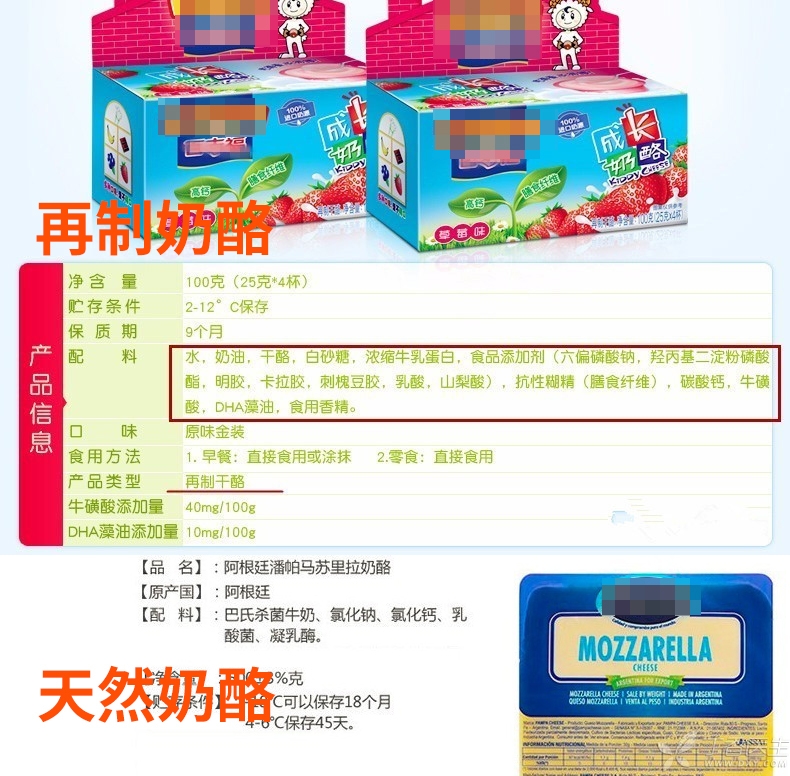
It is more important to cultivate good eating habits.
The vast majority of “children’s food” currently on the market is actually no different from ordinary food eaten by adults. Apart from adding various nutrients, their biggest characteristic is to attract children in terms of taste, color, shape, outer packaging, etc. Such foods do not provide better nutritional value, but only satisfy children in terms of energy or taste, which is not conducive to the formation of children’s good eating habits.
Apart from infant formula foods and supplementary foods for infants, other foods labeled [children’s specialty] are unnecessary. Even if parents have no shortage of money, such foods labeled [children’s specialty] not only do not provide rich nutrition for children, but also may prevent children from forming healthy eating habits. Why should parents spend this money in vain?
As parents of the new era, In particular, skills to read [nutrition labels] are needed, Only in this way can we see through the essence of food at a glance. Instead of choosing the so-called “children’s food”, parents should do more to cultivate their children’s good eating habits, provide them with healthy and nutritious food, educate their children not to choose food according to color, taste, shape and packaging, cultivate the habit of not being partial to food or picky about food, and establish an interest in healthy eating.
Clove Garden is exclusively authorized and cannot be reproduced without permission.
